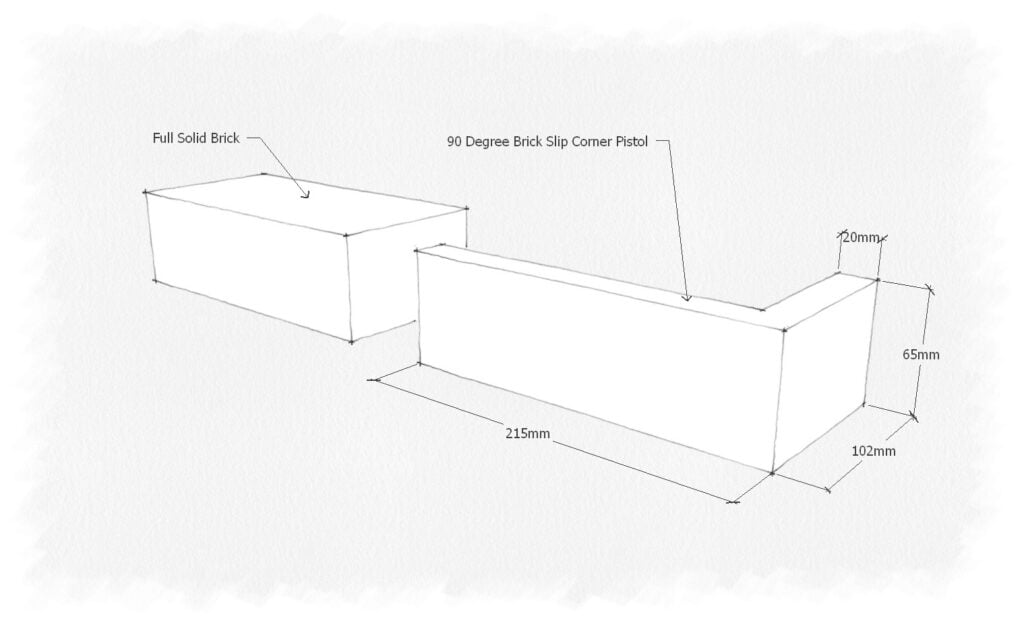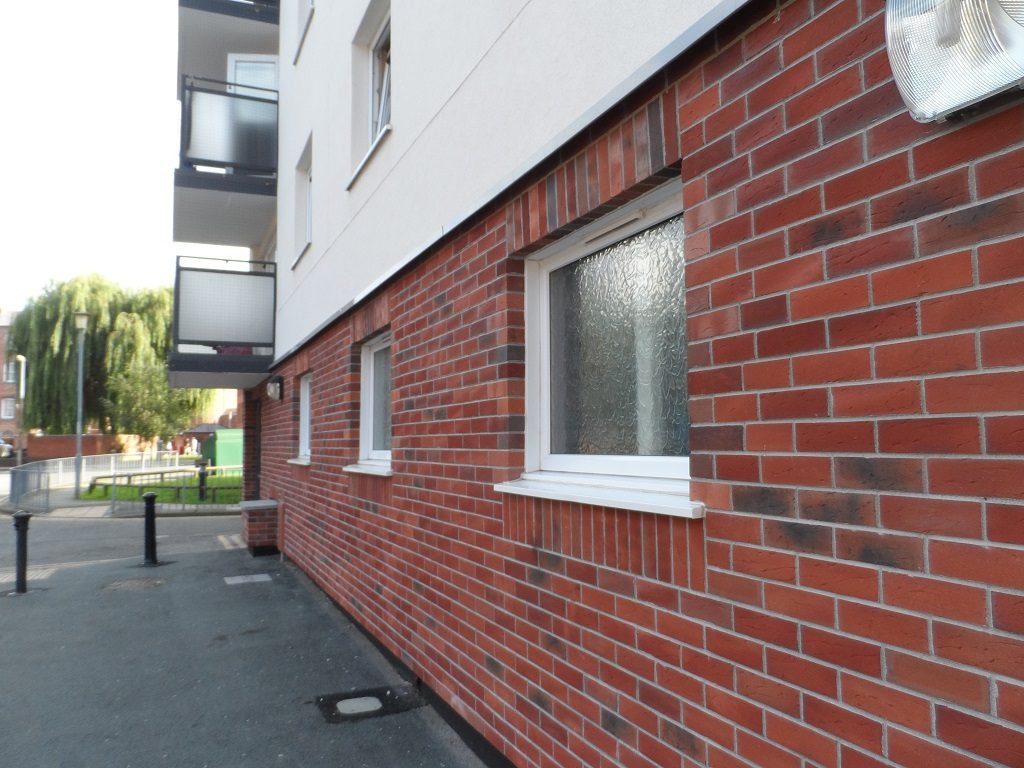Frequently Asked Questions



Sand moulded brick slips and bricks are made in a similar way to handmade brick slips but in more of a mechanised way.
When making 'stock' bricks (the technical term for sand coated brick slips derived from the old handmaking 'Stock and BIock' mould) machines take over the role of part or all of the process.
Traditional but regular
Sand moulded brick slips are reasonably regular and have a relatively featureless face compared to handmade bricks but exhibit some of the soft, rounded edges and irregularity of shape and size due to the moulding process.

The 'Pros'
- Cost Effective
- Being machine made they are faster to produce and involve less labour. Sand moulded brick slips are mostly used as facing brick slips in the Southern Counties as a facing brick.
- Aesthetically attractive
- Matclad sand moulded brick slips are still sanded and demoulded by hand rather than using a fully automated brick pressing machine. This gives the end product a slightly more irregular (but more controlled) size and finish.
The 'Cons'
- Relatively mono-textured
- If you are looking for a feature wall handmade or reclaimed brick slips are more textured and varied.
The process of making brick cost effectively and in volume began, as with many industries, to become achievable in the late 19th century with the advent of steam power and the Industrial revolution. Gone were the days of 'pugging' clay by foot and throwing the shapes by hand and in it's place the skilled artisans were mostly replaced by machines.
The Pug and Brick Kettle Press
Machine designers produced simple 'pugging' machines to more complex presses. A whole suite of machines were designed from c. 1850 onwards and in principle have barely changed in design albeit with more automation and safety features than the hand-cranked clay press shown below...

Mixing and moulding the clay brick slips
Clay is put into a mixing machine either dry or semi-wet and water is added until, as the machine mixes and blends the clay and water, the clay becomes a soft pliable material ready for a shaping machine.
This 'soft mud' clay mix is then fed into a brick press which, dependent on the design, either pushes or drops the clay into more modern plastic moulds fed around in a circuit. These presses, due to being mechanically driven can exert more pressure and as a result mould more bricks at a time than a person can.
Matclad have invested in, and modified, brick machines to produce brick slips for the UK and international markets. You can watch the handmaking and sand moulded brick slip production process in the following video.
The information provided by Matclad Limited ("we", "us", "our") on www.matclad.co.uk (the "Site") is for general informational purposes only. All information on the Site is provided in good faith, however we make no representation or warranty of any kind, express or implied, regarding the accuracy, adequacy, validity, reliability, availability or completeness of any information on the Site.
Read our Terms and Conditions of Sale
Need brick slip advice?
Take off? Brick match? Application advice?
Call our friendly staff who will be able to give you advice on 01978 291133
What are ‘Brick Slips’?
Brick slips, sometimes known as ‘brick veneer’, ‘thin bricks’ or ‘brick cladding’, are thin tiles used to create the appearance of brickwork. They can be made from a variety of materials including clay, concrete and plastic/resin with each having their own properties.
Brick slips have been sold commercially for about fifty years (the first US patents appear in 1937) but have started to become a well known construction product due to the drive towards more sustainable and lightweight construction.
What are ‘Brick Slip Adhesives’?
One of the most common questions we hear is ‘how do I stick them to the wall’ and choosing the right brick slip adhesive can be confusing if you have not installed brick slips before. This guide should help you but if you have a doubt as to what you should use please call our office and we will help you choose the right brick slip adhesive.
What are ‘Brick Slip Systems’
There are many ways to install brick slips ranging from direct application through to glued and mechanically fixed installations.
Installing brick slips can be time consuming and whilst relatively simple the finished appearance of the installation can be affected by many subtle but important issues.
Brick slip systems are designed to simplify the installation process and mitigate some of these issues.
What are ‘Pointing Mortars’
Using pointing mortars to fill the gaps (joints) between the brick slips is important to achieve a finish that looks like real brickwork. The mortar used on conventional brickwork makes up about 17% of the overall area so can impact the overall colour and final appearance of the slip installation. In traditional bricklaying the mortar [...]
Do my brick slips need sealing?
The sealing of brick slips and bricks in general often gets asked and for good reason. Whilst there is no hard and fast rule here is some of the guidance we offer as to whether you should seal your brick slip installation
What is the ‘Firing’ process?
Clay brick slips start their life in the ground as raw clay. Once it is dug from the ground, prepared into powder, mixed with water and pugged it is formed into shape and slowly dried until it is hard.
Once dried it is ready to be ‘fired’ – heated up until glowing red hot (c. 1100ºC) – which fixes (vitrifies) the clay into a permanent ceramic form.
You can think of brick as being essentially ‘dirty glass’.
The art of firing the brick is quite a complex process often perfected over many trials. There is no set temperature a particular clay body will take before melting into a puddle (literally) or simply not being fired and therefore not frost resistant.
What are ‘Brick Slip Corners’
Brick slip corners are literally the cornerstone of anything more than a simple feature wall. They are used when incorporating doors, windows and all manner of elements into an elevation.
Without corner ‘pistols’ – pistols being the more technical term – brick slip installations would either need beading, flashing or have an unsightly seam at each corner reveal.
What are ‘Reclaimed’ brick slips?
Reclaimed brick slips are used extensively for internal feature walls creating the illusion of exposed brickwork in a room.
The production of brick slips from these bricks is expensive and laborious but the end result is hard to replicate in newly formed bricks.
What are ‘Modern’ brick slips
Modern brick slips are more precise, less heavy and thinner than other moulded brick slips while still retaining the timeless quality of a clay product.
They tend to be lower cost and faster to produce and apply due to their precision making them the go to product for external wall applications in large developments such as social housing, high rise building refurbishment programs and in architectural situations where clean lines and uniformity are desirable.
What are ‘Handmade’ brick slips
Handmade brick slips are produced in the same manner practised for thousands of years. A handmade brick slip exhibits character that can be lost when machines do the work that a person would traditionally perform due to the fact that each handmaker is individual and has their own slightly different technique.
What are ‘Rustic’ brick slips
‘Rustic’ brick slips and bricks are made in a similar way to sand moulded brick slips but the product is made with a different de-moulding technique in order to produce a more heavily ‘rusticated’ edge.
What are Quarry Tiles?
Quarry tiles, as made traditionally by Dennis Ruabon, Daniel Platts and Hawkins, are very hard wearing flooring tiles suitable for internal and external high traffic applications. They typically were made as squares but rectangular shapes are now more often made as you can create more interesting laying patterns. We supply three standard sizes and can [...]
Who should read the FAQS?
Even if you have used brick slips before we recommend you read these FAQS. We regularly update this with more content so that you can avoid the mistakes of others (mainly us!)










